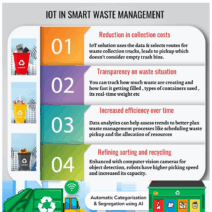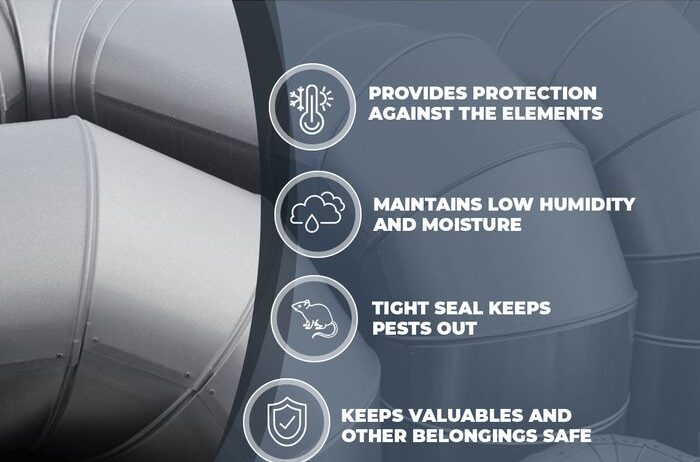In a world where climate change permeates our daily discourse, the notion of storage may seem trivial. Yet, the hidden realms of our lives, tucked away in storage facilities, can reflect our environmental consciousness. Imagine your belongings embroiled in a stifling struggle against the elements—a cacophony of humidity, temperature extremes, and pestilence. This scenario underscores the importance of climate-controlled storage and why it matters more than you think.
Those seeking to protect their possessions must recognize that conventional storage often lacks the safeguards necessary for preservation. In the same way a greenhouse nurtures delicate plants, climate-controlled storage maintains an optimal environment for valuable items. Typically, these facilities regulate temperature and humidity, creating a buffer against the unforgiving nature of the outside world.
To understand the necessity of climate-controlled storage, one must first consider the profound effects of temperature fluctuations and moisture levels on various materials. Wood, for example, is an organic entity that swells and shrinks with changes in humidity. The same can be said for leather, which can crack and degrade if not stored in a controlled environment. Ignoring these factors is akin to casting aside a carefully crafted painting, allowing it to succumb to the ravages of time and neglect.
Furthermore, fabrics and textiles thrive in stable conditions. The slightest shift in temperature can invite mold and mildew, turning cherished garments into musty reminders of loss. A climate-controlled environment protects against this fate, maintaining an equilibrium that promotes longevity. In stark contrast, traditional storage units, often exposed to extremes, present a perilous risk to your delicate items.
Consider also the technological artifacts of our time. Electronics, from vintage radios to cutting-edge computers, are sensitive to temperature and humidity. A slight deviation can result in malfunction or degradation, rendering them obsolete. Protecting these technological marvels is crucial for individuals seeking to preserve not just memories, but legacies. Much like the way a museum curates history, climate-controlled storage becomes a safeguard for the artifacts of our lives.
The financial implications of storing items in a non-climate-controlled environment can be staggering. Many believe that opting for a cheaper, traditional storage unit is a prudent financial decision, but this myopic thinking often leads to costly consequences. If temperature and humidity wreak havoc on your possessions, the expenses incurred in repairs, replacements, or restoration would eclipse any initial savings. Ultimately, investing in climate-controlled storage transcends mere practicality; it represents a commitment to preserving value.
In an era marked by sustainability, the responsible steward of our belongings must consider broader environmental implications. Climate-controlled storage facilities, designed with energy-efficient technologies and sustainable practices, can alleviate our ecological footprint. By embracing such facilities, individuals champion a new form of environmentalism, where the preservation of both possessions and the planet take precedence.
Moreover, the unique appeal of climate-controlled storage transcends functional benefits. It offers peace of mind. Knowing that your items are housed in a stable environment fosters a sense of security. It is a bastion amid chaos, an oasis of reliability while the world outside may fluctuate violently in its climatic whims. Every time one steps into a climate-controlled unit, they are enveloped in the assurance that their goods remain unscathed—much like a ship sheltered from stormy seas.
As individuals accumulate belongings over a lifetime, the conversation surrounding storage methods becomes increasingly essential. The frequency with which one may need to access these possessions makes the argument for climate control even more compelling. Imagine needing a critical document only to find it wilting in the attic’s heat or your grandmother’s quilt reduced to a damp relic. Climate-controlled storage negates these inconveniences, as one can rest assured knowing their items are stored with care, easily retrievable in pristine condition.
Lastly, community practices in the realm of storage can influence public perception of environmental stewardship. By championing climate-controlled storage options, society can shift focus towards sustainable living habits. Advocating for responsible consumption and storage ignites conversations about broader environmental practices, encouraging individuals to reflect on their relationship with material possessions. This ripple effect empowers communities to embrace a culture of sustainability that extends far beyond the confines of a storage facility.
In conclusion, the question of whether your storage is climate-controlled carries significances that extend beyond the walls of your storage unit. It is an inquiry steeped in the protection of material culture, financial wisdom, and ecological consciousness. To dismiss the importance of climate-controlled storage is to overlook an opportunity to align the safeguarding of cherished possessions with a commitment to the environment. In the grand tapestry of life, where every choice illustrates the narratives we choose to tell, investing in climate-controlled storage emerges not merely as a pragmatic decision but as a conscientious pledge to a sustainable future. Secure your legacy, protect the tangible remnants of your journey, and embrace the uniquely transformative power of climate-controlled storage.








